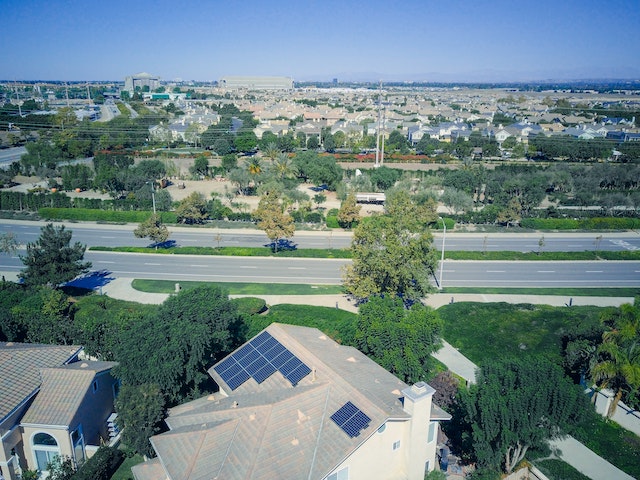
Grid-connected solar power systems are on the rise. Thousands of homeowners from the East Coast to the West Coast use them to lower their monthly energy expenses. Grid-connected solar power systems still consist of photovoltaic (PV) cells that convert sunlight into electricity, but they leverage the services of a local utility provider.
The Basics of Grid-Connected Solar Power Systems
Grid-connected solar power systems are solar panel installations that are connected to a local power grid. Also known as grid-tied solar power systems, they feed electricity to the local power grid. The local power grid will then distribute this electricity to its customers.
Most grid-connected solar power systems feature the following components:
- PV cells, typically in the form of monocrystalline or polycrystalline panels
- Solar inverter to convert direct current (DC) electricity into alternating current (AC) electricity
- Electrical connection to the local power grid
- Metering device to monitor how much electricity is generated by the solar panels and fed to the local power grid
How Grid-Connected Solar Power Systems Work
Grid-connected solar power systems work like most other solar power systems, such as off-the-grid systems, by converting sunlight into electricity. The PV cells are made of a special type of material that responds to sunlight. When exposed to sunlight, the electrons within the PV cells will break free from their atoms. This reaction generates electricity.
PV cells initially generate DC electricity. Because homes and buildings use AC electricity, it must pass through a solar inverter. A solar inverter is a device that converts DC electricity to AC electricity. Once converted, the AC electricity will travel to the local power grid where the provider will distribute it to customers.
Benefits of a Grid-Connected Solar Power System
You might be wondering what benefits a grid-connected solar power system offers. One of the main benefits is cost savings. Most utility providers offer net metering or feed-in tariffs to homeowners with a grid-connected solar power system. Net metering and feed-in tariffs are contracts that reward homeowners with credits in exchange for their solar-generated electricity.
Grid-connected solar power systems are also easier to install and maintain. If you choose an off-the-grid solar power system, you’ll need a set of batteries. Batteries are used to store the electricity generated by the PV cells. Grid-connected solar power systems don’t require batteries. The electricity generated by them is sent directly to the local power grid, thus eliminating the need for batteries.

